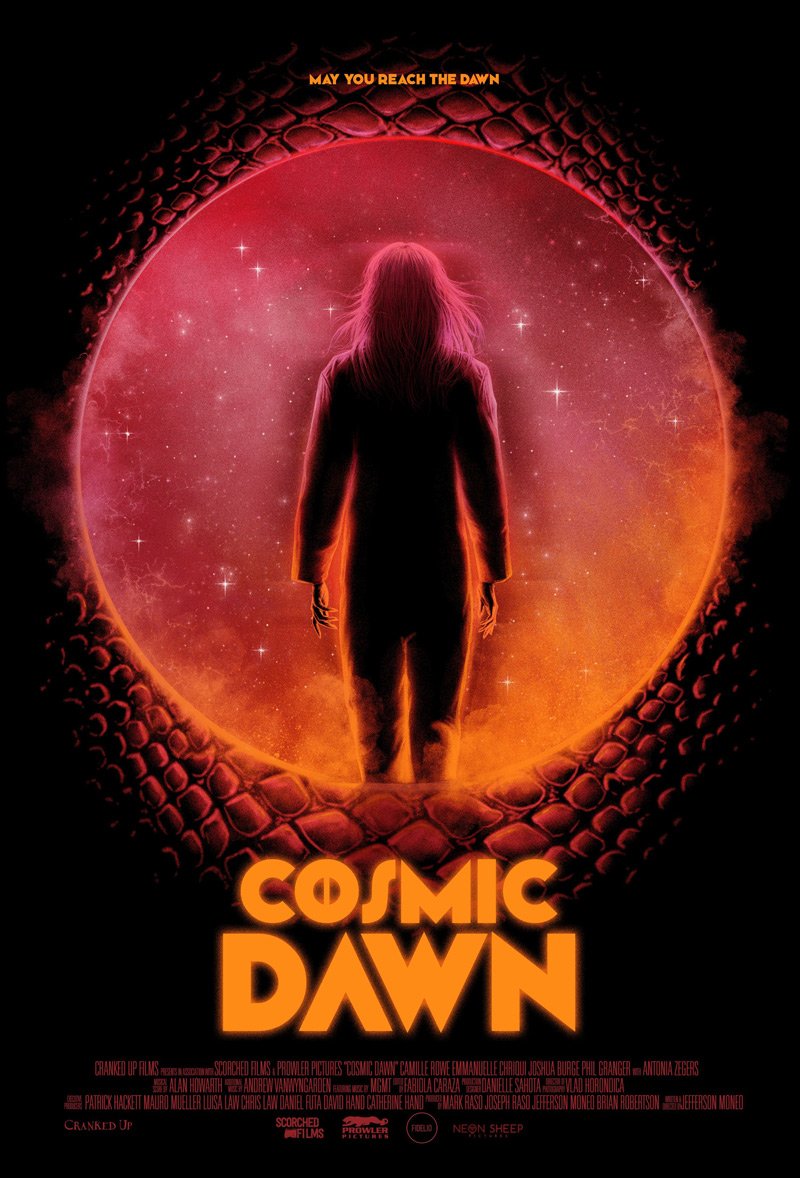You don’t need a budget when you’ve got a beach ball with legs - and other lessons from bargain science fiction films
Of all of the film genres, some argue that science fiction is the one that is the hardest to pull off with a low budget. Conventional wisdom suggests that Jane Q. Public only craves CGI-laden space romps with A-listers, or whatever Marvel does these days.
But conventional wisdom is a total bore. Personally, flashy CGI is the fastest turn-off when it comes to science fiction. Give me minimalism, effects cooked with love in Premiere, and - damnit - just give me a good script and I’ll believe in whichever version of reality you want me to.
Written by Jess Sweetman
I’m pretty sure I’m not alone in this - the history of film is packed with examples of filmmakers who took what they had and nailed it - with some becoming blockbusters (the first Terminator is still considered a modestly priced indie movie), others springboarding filmmakers to stardom (say hi Star Wars!), and more so playing a part in the careers of auteurs who make exactly what we all want - amazing films that come from the heart.
Here are some of my favourite examples of low-budget science fiction films, and the lessons an aspiring filmmaker can learn from them.
lesson 1: take your time, build your world, and be tenacious with your ideas.
Film: Dark Star - 1974 - Directed by John Carpenter, Written by John Carpenter and Dan O’Bannon,
Budget: $60,000
Dark Star began as a 45-minute student short made by Carpenter and O’Bannon for their graduation project at USC. The film was expanded over a further four years into a feature - according to Carpenter:
“It wasn’t a movie shoot like we think of today. It wasn’t 'you shoot the whole movie in one section in one block of time.' It was 'shoot a scene, raise money, shoot a scene months later, raise money.'"
Much has been written about Dark Star, it’s one of Quentin Tarantino’s favourite films, the low-cost visual effects dreamed up by O’Bannon to show a jump into hyperspace were next seen in Star Wars, and in my favourite comedy touch - the alien is played by a beach ball with feet whose death scene involves it unceremoniously popping.
But the film flopped at the cinema when it was first released, the genre mashing apparently baffling audiences who didn’t realise it was okay to laugh. Seeing this reaction led O’Bannon to want to try again - to reframe the original conceit of Dark Star into the “same movie - but in a completely different light”. If the audience wouldn’t laugh then perhaps they’d be afraid instead - and led him to the premise of his screenplay Alien.
Eventually Dark Star found its audience in the VHS world and was catapulted to cult status, and the reputations of the filmmakers grew accordingly.
Sagelike advice? Take your time to make your film the way you want it to be made - whatever that means to you. And if your ideas don’t work the first time, learn from your audience in order to redraw and build on them. Science fiction is about world building and it takes a while to build a world.
See also: THX 1138 . We all know George Lucas lives to revisit his films.
lesson 2: adding a science fiction twist will make your tense family drama more universal
Film: Advantageous, 2015 directed by Jennifer Phang, written by Jacqueline Kim and Jennifer Phang
Budget: Not known (but it’s considered a low-budget indie movie)
Jennifer Phang had already made her first feature when she began the process of making the 21-minute episode of the PBS series Futurestates that would eventually grow to become her feature film Advantageous. The film went on to win a Special Jury Prize at Sundance as well as being nominated for an Independent Spirit Award in 2015, and deservedly so - the film’s exploration of themes ranging from misogyny and racism to a mother’s unfaltering love for her child gives it huge appeal.
The future as depicted in Advantageous is deliberately familiar. The filmmaker created a composite city by filming in San Francisco, Los Angeles, and New York, not famous landmarks but normal places. Meanwhile some shots show an epic future-scape influenced by Blade Runner, the two sit side-by-side.
Similarly her protagonist prefers a low-tech life outside of work, attempting (like many contemporary parents) to:“Keep (her daughter) in the analogue world. That means spending time with music and things that don’t involve computers.” - Phang in an interview with Moveable Fest.com
This is all deliberate, the film has two narrative strands with equal weight - one a tense family drama, the other a dystopian future where Gwen is pressured to transfer her consciousness into a younger (less Asian) body in order to keep her job and make a future for her child.
The science fiction becomes a way for the social issues to reach the audience more deeply. Phang again, in an Interview with Seventh-Row.com says:
“Science fiction explores social issues through allegory; for example, Battlestar Galactica explores warfare and class. Because it’s removed from our reality, through its setting, it allows you to lose yourself a little bit. You don’t have to relate every single thing to your life, so it allows you to go deeper without depressing your audience too much.”
Sagelike advice? What would happen if you took the drama script you’re working on and did a little world building around it? Science fiction is often the result of contemporary issues being removed from their context and explored in a new way.
See Also: Another Earth
lesson 3. who doesn’t love guerilla filmmaking?
Film: Another Earth, 2011 directed by Mike Cahill, written by Brit Marling and Mike Cahill.
Budget: $100,000
Another Earth is a film about grief, sadness, guilt, and redemption, with a science fiction lens to magnify the issues. The film went on to win a Special Jury Award at Sundance, as well as being nominated for two Independent Spirit Awards, with praise for the actors’ vulnerable work.
The film is equally famous for being a great example that sometimes you just have to do what you’ve gotta do to get your film made.
While the dramatic scenes between the two main characters were shot in order, allowing the story to emerge in a natural and episodic way, the economics students turned filmmakers Mike Cahill and Brit Marling, had to lean into their bag of tricks to get some of the other scenes they needed. During production they lived with Cahill's parents to save money and relied on lots of guerilla filmmaking tactics to get their shots.
According to Cahill in an interview with Den of Geek, in order to film one of the opening scenes, a car crash, but with very little budget: “We rented this crane from Hertz for fifty dollars. Not a proper film crane, but a window washing crane.”
And for the smashed cars: “We went to a junk yard, and asked the guys if we could borrow two cars that looked like they’d smashed up – a BMW and an SUV. They let us borrow the cars for free.”
What’s more, according to an Interview in Screen Anarchy with Marling and Cahill:
“For another scene, in which Rhoda is seen leaving prison, the couple simply pulled up to a prison. Marling went inside with a yoga mat, told the guards she was there to teach yoga, and then snuck back out as the guards were distracted figuring out why a woman they'd never seen before was ready to teach yoga to prisoners. Outside, Cahill remained in their car, filming her leaving prison. They finished just as sirens wailed and police cars surrounded them.” (PLEASE DON’T TRY THIS! - Ed.)
Sagelike Advice: Use your ingenuity and find ways to create effects using everyday objects. We’re also not telling you to break in or out of a prison - in fact - don’t try this!, but rather take inspiration from the filmmakers around you and share your ingenuity.
See Also: Every other film on this list!
lesson 4: play “guess the genre!” to build suspense
Film: Cosmic Dawn - 2022 Written and directed by Jefferson Moneo
Budget - unknown but it was a low-budget indie film
I didn’t look for Cosmic Dawn, but somehow the film found me when I was browsing Kanopy, and as soon as the cast of this weird Canadian made-for-tv movie about cults started ecstatically singing along to “Calling Occupants of Interplanetary Craft”, I was ready to don a pastel jumpsuit and head of to Venus or wherever.
So what IS Cosmic Dawn? The first time I watched this movie I was gripped by trying to figure out everything about this film - Is it a made-for-tv movie about a cult? A science fiction masterpiece? A schlock musical? And is it SERIOUS?
The film takes pieces of several genres and adds a tongue-in-cheek playfulness to its presentation - aided by the director swearing in interviews that the film is based on his own experience of seeing a UFO as a child. The score, plus a notable sing-along by the cast mid-film, definitely helps add a knowing wink.
According to director Jefferson Moneo in an interview with on Nightmarish Conjurings.com: “I like films that are not predictable and films that take me to someplace I wasn’t expecting to go.”
Sagelike Advice: Play with the constraints of genre films in order to keep your audiences on the edge of their seats as they try and guess where you’re going.
See also: Brit Marling and Zal Batmanglij’s film Sound Of My Voice, which in some ways could be Cosmic Dawn played straight.
lesson 5: build something fantastic out of household objects:
Film: Cube, 1997, Written and directed by Vincenzo Natali.
Budget: $350,000
Cube is a cult horror / science fiction film from the heyday of low-budget blockbusters.As much a paranoid commentary on humanity as a conventional horror, the film uses a splattering of gore to great effect as well as building tension - and everything takes place in one location - you guessed it - a massive cube.
“It was kind of a homemade movie” says Natali - who created the illusion of the characters inhabiting different spaces by changing colour filters, and used the invasive sounds of a nearby train track to signify the constant shifting of the cube itself.
According to Natali: “We shot in a Toronto warehouse, not a proper studio. We built a cube and a half and it had to be off the floor because it was all lit from behind the cube walls.” Interview in the Victoria Times Colonist from 1997.
Sagelike Advice: Rely on your imagination and your craftiness, as well as the craftiness of those around you. And - apparently, according to Natali, don’t copy him and make a cube: “Shooting in a cube is horrendous. It’s a horrible thing to do. I’d never wish it on my worst enemy because it’s literally a pressure cooker” he said in a Dread Central interview afterwards. So now you know.
See also: There are so many brilliant examples of this but I’d always point you back to the king of recouping his budgets - Roger Corman, who hired a young Art Director called James Cameron for his ridiculous Aliens rip-off Galaxy Of Terror. Cameron created a set that is not only the precursor for the set he would use later on while directing Aliens, but one that was made from Mcdonalds burger cartons.









